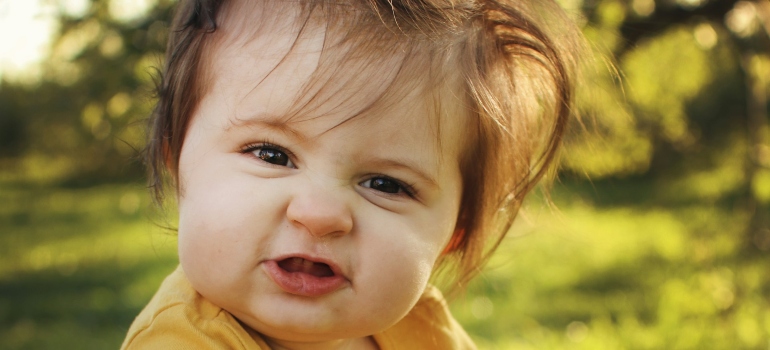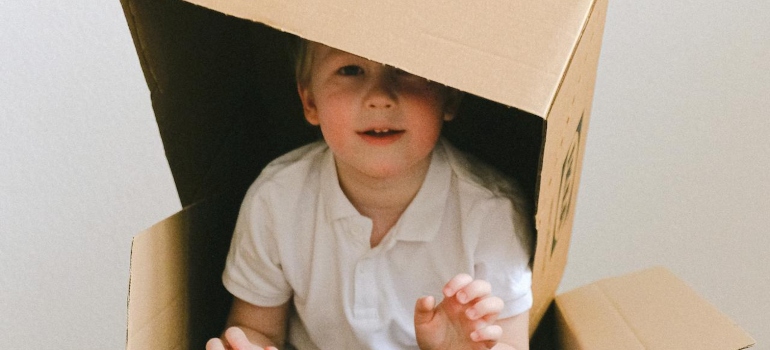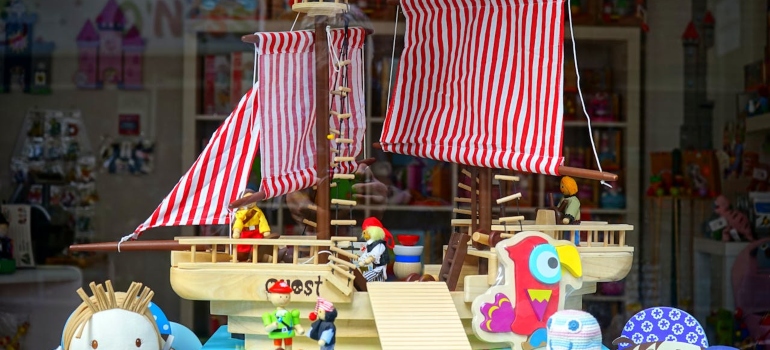The Right Way to Pack Your Kid’s Room
Moving can be stressful, but it can be even more complicated, time, and energy-consuming when you have children. When you want to make a cross country move with kids, you should think about them first, and be patient. It requires a lot of time for your kids to adjust to the changes. They leave friends behind, their school, favorite room, playground, hobbies, etc. One of the hardest parts of moving for children is the concept of packing. Make sure to involve them in the process and pack your kid’s room by respecting their wishes. Make sure they understand the process of packing and that they will see their favorite toys again in a new home. Here are some tips to make the packing process easier!
Keep Your Kids Informed About The Move
Moving to a new home is a significant change that can be stressful for children of all ages. It’s essential to keep your kids informed about the moving process to help them feel secure and involved. To have more time and patience for this, consider leaving the logistics to reputable movers you can find through Best Cross Country Movers. While movers do their job, you will have time to be there 100% for your kids.
Red Stag Casino offers a unique and engaging online gaming experience that appeals to both casual players and seasoned gamblers. Established to provide an immersive environment, this casino features a wide array of games, including slots, table games, and even live dealer options. Players will appreciate the well-designed interface, making navigation effortless and enjoyable. Additionally, Red Stag Casino is known for its generous bonus offers and promotions, ensuring that players have ample opportunities to enhance their bankroll.
For those interested in exploring everything that Red Stag Casino has to offer, you can visit their official website: https://redstag-casino.online/. Here, you’ll find detailed information about the game selection, payment methods, and customer support services. The casino prides itself on providing a secure gaming environment, backed by reliable encryption technologies. With a friendly customer service team available around the clock, players can feel confident in their gaming experience at Red Stag. Overall, it’s a great destination for anyone looking to enjoy online gaming with a twist.

Here’s how you can effectively communicate with your children about the move, tailored to different age groups:
Toddlers (Ages 1-3):
- Simplify the explanation: Use simple words that toddlers can understand. Explain that the family is “going to a new house” and emphasize that everyone, including their toys, will come along.
- Maintain routine: Keep their daily routine as consistent as possible before and after the move. This stability is reassuring.
- Visit the new home: If possible, visit the new home with your toddler before moving day, so it becomes a familiar place.
Preschoolers (Ages 4-5):
- Storytime: Read books about moving. Stories help them visualize and understand the process.
- Encourage questions: They might have many questions about why and where you are moving. Answer these patiently.
- Let them help: Allow them to choose a special decoration or color for their new room to increase their excitement.
School-age children (Ages 6-12):
- Detailed explanation: Provide more details about why you are moving (e.g., a new job, being closer to family). Show them photos of the new house and describe what their new room could look like.
- Explore the new area together: Research and discuss new schools and local activities they might enjoy. This helps them look forward to making new friends.
- Stay Connected: Make plans to stay in touch with old friends through visits, video calls, or letters.
Teenagers (Ages 13-18):
- Involve them fully: Teenagers appreciate being treated like adults. Discuss the move openly, including the reasons behind it and how it will affect the family.
- Focus on opportunities: Highlight the new opportunities available at the destination, such as activities, sports, or educational prospects.
- Social continuity: Encourage them to stay connected with their friends and plan future visits. Help them find ways to integrate into new social groups.
General tips:
- Open communication: Encourage open dialogue where kids can express their feelings and concerns about the move. Acknowledge their feelings and provide reassurance.
- Visual aids: Use maps, photos, or a calendar with important dates marked (like the moving day, or school start day) to help them visualize the change.
- Positive reinforcement: Focus on the positive aspects of the move. The excitement from parents can be contagious and can help alleviate their anxiety.

Items Most Commonly Found In A Child’s Room
Children’s rooms are typically filled with a variety of items, each requiring careful consideration when packing for a move. Among the most common items you will encounter when you pack your kid’s room are toys, books, clothes, and delicate decorations.
- Toys: Often numbering in the dozens, toys vary from small figurines to large plush animals. Pack smaller toys in medium-sized boxes, using bubble wrap or packing paper to fill gaps and prevent shifting. Larger toys are best transported in their boxes if possible, or nestled securely in larger boxes with plenty of padding.
- Books: Kids often have collections ranging from 20 to 50 books. Use small, sturdy boxes for books to avoid making them too heavy to lift. Stack books vertically or lay them flat, alternating the spine and open side to balance the box and prevent damage.
- Clothes: Depending on the age of the child, a wardrobe might consist of 30 to 50 pieces of clothing. Use wardrobe boxes for hanging items to keep them wrinkle-free. Fold other clothing and pack them in medium-sized boxes, using them to cushion more fragile items if necessary.
- Delicate decorations: From night lights to framed photos, delicate items should be wrapped individually in bubble wrap and packed tightly into small boxes. Label these boxes clearly as “Fragile” to ensure careful handling during the move.
Tips to Pack Your Kid’s Room Safely and Efficiently
Packing a child’s room safely and efficiently is a challenging yet crucial task during a move. For parents, the difficulty lies not only in the physical act of packing but also in managing this while keeping an eye on young ones. Children’s rooms are filled with small, delicate items and beloved toys that need careful handling to prevent damage or loss.
Moreover, ensuring safety during the packing process is paramount as little ones are naturally curious and may find unpacked items intriguing. While it is entirely possible to DIY this task, balancing the dual demands of thorough packing and vigilant childcare can stretch a parent’s capacity thin. For peace of mind and to ensure that everything is packed securely and efficiently, contacting professional packing service providers is a wise choice. These experts can take over the packing process, allowing parents to focus on their children and other aspects of the move.

Keep your kids away from sharp objects
When you begin to pack your child’s room, the chaos of boxes and packing materials scattered everywhere can easily distract you from potential hazards. Sharp tools like scissors and box cutters often end up on the floor or within easy reach on tables. This poses a serious risk, as curious children might grab these dangerous items, potentially leading to injuries. To ensure safety, always store such sharp objects securely and out of your children’s reach.
Also, if age-appropriate, take this opportunity to educate your children about the function and risks of these tools, reinforcing the importance of handling them safely under supervision. Another effective strategy is to create a designated “safe zone” in the room where your child can play or watch without accessing any packing tools. This area can be marked clearly and made comfortable with their favorite toys, allowing you to pack efficiently while keeping a watchful eye on them.
Pack an essentials box
When you pack your kid’s room, make sure to pack a special box with essential items. The essentials box should contain your kid’s favorite toy, book, video game, and other important items such as clothing, tissues, a bottle of water, snacks, etc. The essentials box should contain everything you need during the trip and first days and nights in a new home. Also, make sure to pack it last and bring it with you in the car.

Turn packing into a game
If you want to make the moving process easier and more enjoyable for your kids, actively involving them in packing can transform a typically stressful time into an engaging, fun-filled activity. Start by letting them pack their favorite toys. This not only keeps them occupied but also gives them a sense of control and reassurance about the safety of their cherished items. To add a creative twist, provide markers and stickers for them to label and decorate the moving boxes. This can turn the mundane task of packing into an exciting art project.
For a more dynamic approach, consider turning packing into a game. With younger children, you can play “Treasure Packing,” where they hunt for specific toys that fit into different boxes. For older kids, try “Box Tetris,” where they figure out the best way to arrange items in a box efficiently. Playing upbeat music during the process can set a lively and positive mood, making the packing feel like a dance party. Despite these fun ideas, not every family may have the time for such activities, especially during a hectic or last-minute move. In such cases, hiring professional residential movers can be a practical solution. These experts handle the packing and moving swiftly and safely, allowing your family to focus on adapting to the new home without the added stress of packing.
Opt for sustainable materials
When preparing to move your child’s room, opting for eco-friendly packing materials can significantly reduce your environmental impact. Instead of traditional plastic bubble wrap and Styrofoam peanuts, consider using biodegradable packing peanuts, recycled paper, or even household items like towels and blankets for cushioning. Cardboard boxes can be sourced from local stores or through online platforms that recycle moving supplies. Another innovative option is to rent reusable plastic bins, which can be returned after the move. Utilizing these unconventional moving supplies not only minimizes waste but also introduces your children to the importance of sustainable living practices. Teaching them about these choices can help instill a sense of responsibility towards the environment.

Use the packing time to clean the kid’s room too
We know that kids’ rooms are the messiest in the home. Rooms are cluttered with laundry and toys. Packing your kid’s room is the perfect time to conduct a cleaning mission. Also, it is a great time to teach your kids how to clean and to give them some lessons about cleanliness. Throw away all the old toys they don’t play anymore with, old clothes, broken crayons, etc. Here are step-by-step tips for effectively cleaning and organizing these spaces:
- Sort and declutter: Begin by sorting through all the items in the room. Create separate piles for toys, clothes, and other belongings. Engage your kids in the process by asking them to decide which toys they still play with and which can be donated or discarded. This teaches them valuable lessons about letting go of things they no longer need.
- Cleaning and wiping down: Once the room is decluttered, start cleaning from the top down. Wipe down shelves and furniture. For this, use natural cleaning solutions like a mix of vinegar and water or baking soda and lemon. These natural cleaners are safer for children’s rooms, avoiding the harsh chemicals found in many commercial products which can leave harmful residues and odors. Choosing natural cleaning solutions minimizes your family’s exposure to potentially toxic chemicals but also instills an eco-friendly mindset in your children. Additionally, natural cleaners are often more cost-effective and just as efficient.
- Organizing: After cleaning, organize the items you’re keeping. Use this time to teach your children how to maintain order in their spaces, which promotes responsibility and cleanliness.
- Packing: When getting ready for a move, especially when packing a nursery, label boxes clearly and pack items you’ll need immediately on arrival in an easily accessible box. This includes essentials like diapers, a few toys, and clothing.
Decluttering is a must
Decluttering a child’s room is a crucial yet challenging task, especially when children feel they “need” every item they own. You simply cannot pack your kid’s room without doing this. The importance of decluttering lies in creating a space that promotes better organization and reduces the chaos that can overwhelm both children and parents. To tackle this, start by involving your child in the process, explaining that space needs to be made for new experiences and growth. Frame it as a “letting go of the old to welcome the new” adventure, which can make parting with items more meaningful.
If your child is resistant, try categorizing items into “keep,” “store,” and “donate.” Explain how donating helps other children who might not have as many toys. For items that are rarely used but hard for your child to part with, consider a temporary storage solution. Revisit these items after some time has passed; often, children will have moved on emotionally and can let go.
If some items really need to go and it’s causing distress to part with them openly, you might choose to remove them quietly. However, use this method sparingly, as trust is important. Instead, focus on nurturing decision-making skills and generosity, which are valuable lessons in themselves. This gentle approach helps maintain a positive experience and teaches children the valuable skill of letting go.

Help Kids Say Goodbye to Their Old Room
Saying goodbye to a familiar space can be tough for kids. To help them cope with the transition, consider creating a farewell room ritual. This could involve taking photos of your child in their old room or having them draw pictures of their favorite memories associated with their space. You can also encourage them to write a goodbye letter to their room. These activities provide a sense of closure and help children express their feelings about the move. Once you’re settled into your new home, revisiting these memories can be a comforting way for your child to transition and start settling into your new home with ease. This ritual eases the emotional burden and makes the process of embracing a new environment more meaningful and less intimidating for children.
Let Them Help You Organize and Decorate Their New Room
If you are for example moving to Florida with family, it can be an even more exciting time if you ask your children for help when organizing and decorating their new room. Ask them about the color they would like their new room to be. Also, involve them in the decorating process. You want them to be happy in their new home. Ask them about their preferences for bedding, curtains, or wall art. This engagement fosters creativity and gives them a sense of ownership and comfort in their new environment. Remember to keep the decisions age-appropriate, ensuring that the choices are safe and suitable for their developmental stage. By focusing on these details, you help ensure your children are happy and settled in their new home.

Tips for Childproofing Your Move
When planning to move with kids, ensuring their safety during the transition is paramount.
- Begin by securing all heavy furniture and packing materials, which can pose risks if they topple or are left unsecured. Use furniture straps to anchor large items to walls as you pack, preventing any accidental falls. Keep all packing tools like scissors, box cutters, and packing tape out of children’s reach, ideally in a locked drawer or high cabinet.
- During the packing process, be vigilant about small items such as screws, nails, and batteries that children might accidentally find and swallow. Pack these items separately in clearly labeled, child-proof containers. Also, make sure that any household chemicals or cleaning supplies are securely packed away and marked to prevent accidental exposure.
- On moving day, designate a safe play area for children that is away from the main moving activities. This area should be equipped with toys and monitored by an adult at all times. Alternatively, arranging for a friend or family member to watch over the children during the busiest times can ensure they remain safe while you manage the logistics of the move.
Use Professional Packing Help if Needed
If you are not sure how to do it yourself, hire packing professionals to help you pack, move, and unpack your belongings. If you hire Florida cross country movers to help you pack your kid’s room, you will also have more time to spend with your children. While professionals are packing you can help your kids adjust to this big change. So, if you want to save some time and energy hiring packing professionals is always a good idea.

You Can Pack your Kid’s Room Successfully Without Losing Your Mind!
All those little toys and clutter might seem overwhelming now, but once you start the process, you will get motivated to continue. This is the first step to having a more organized living space in your new home. When you pack your kid’s room, usually the messiest in the home, you won’t be intimidated by the rest that needs to be done!





